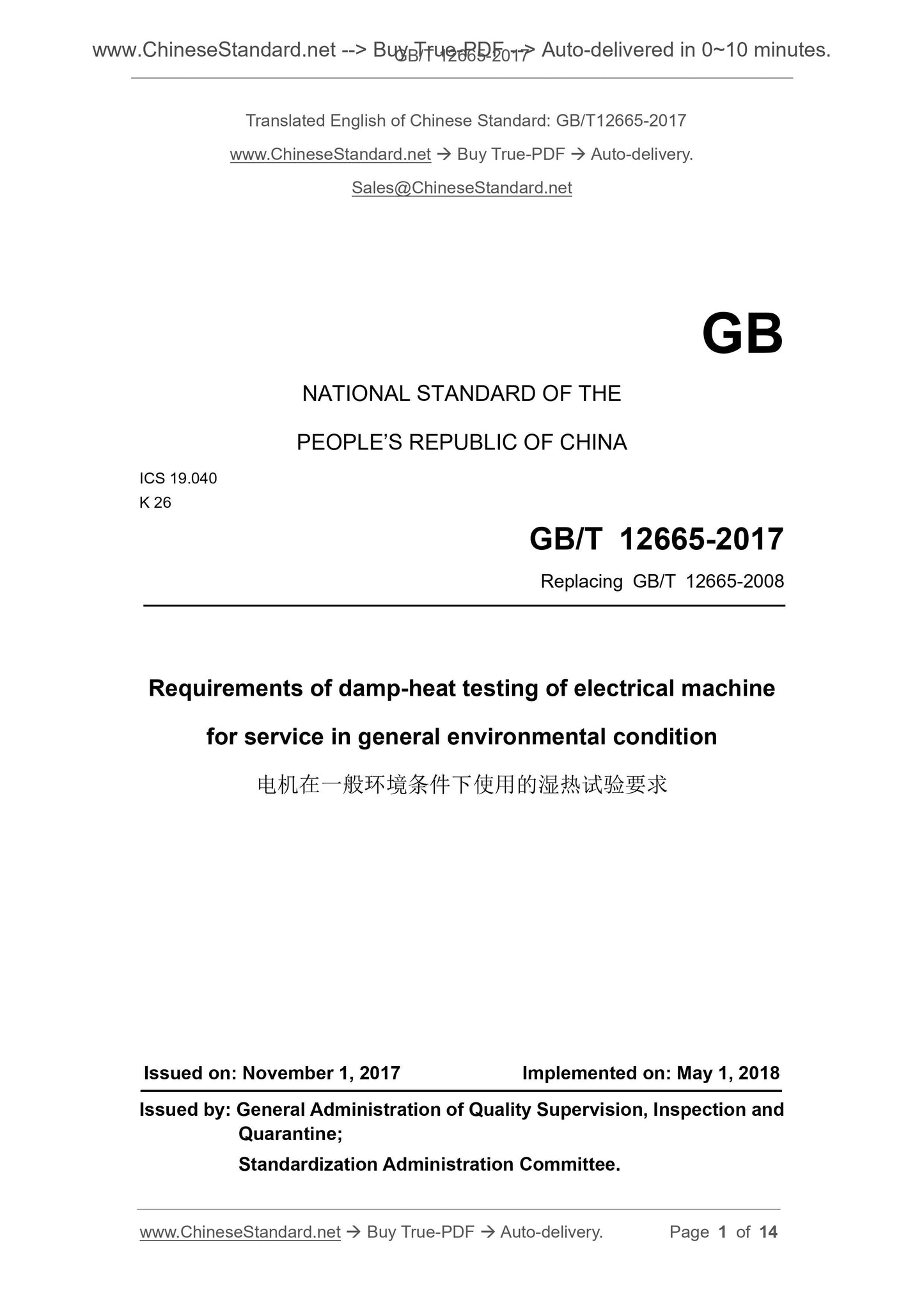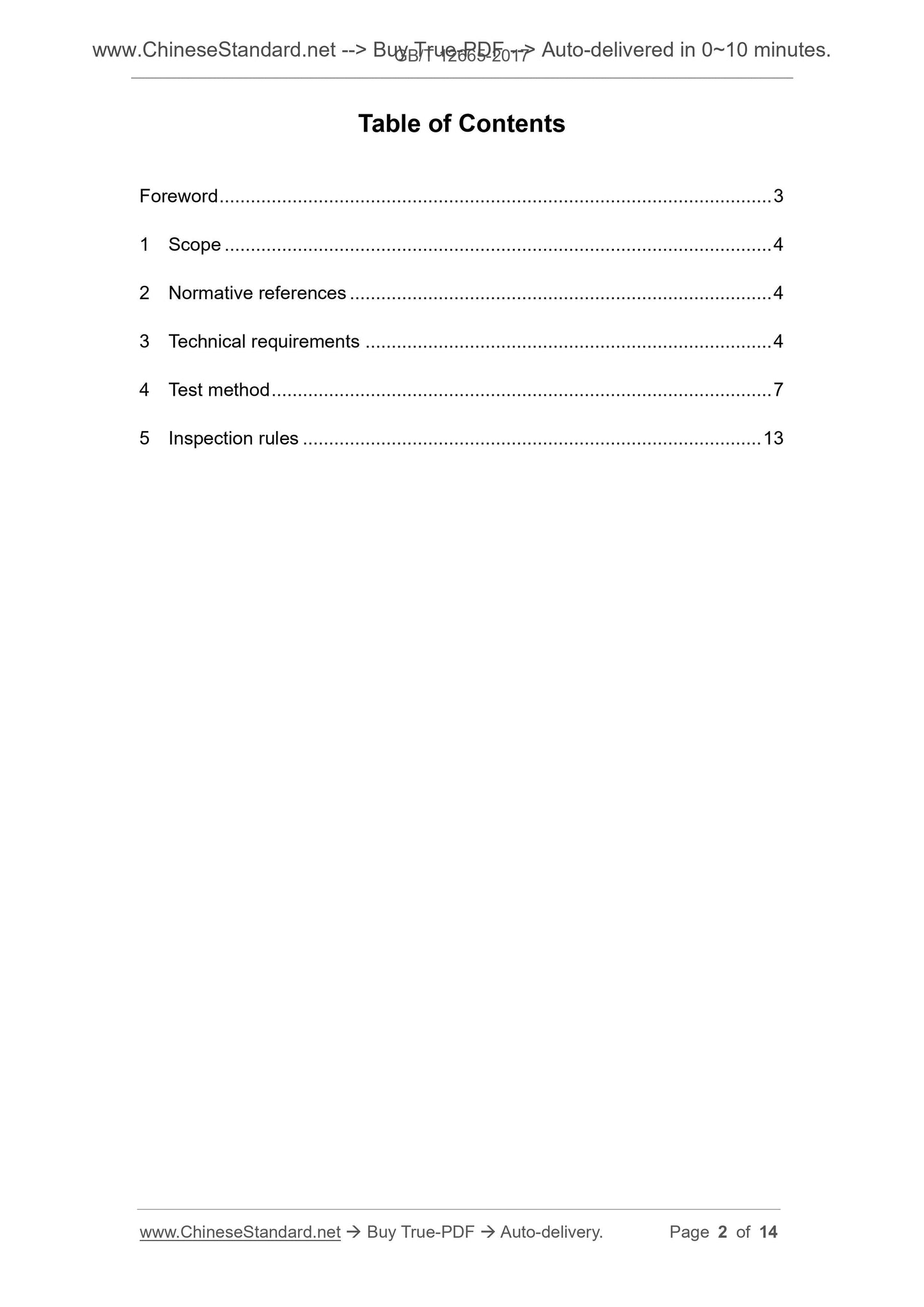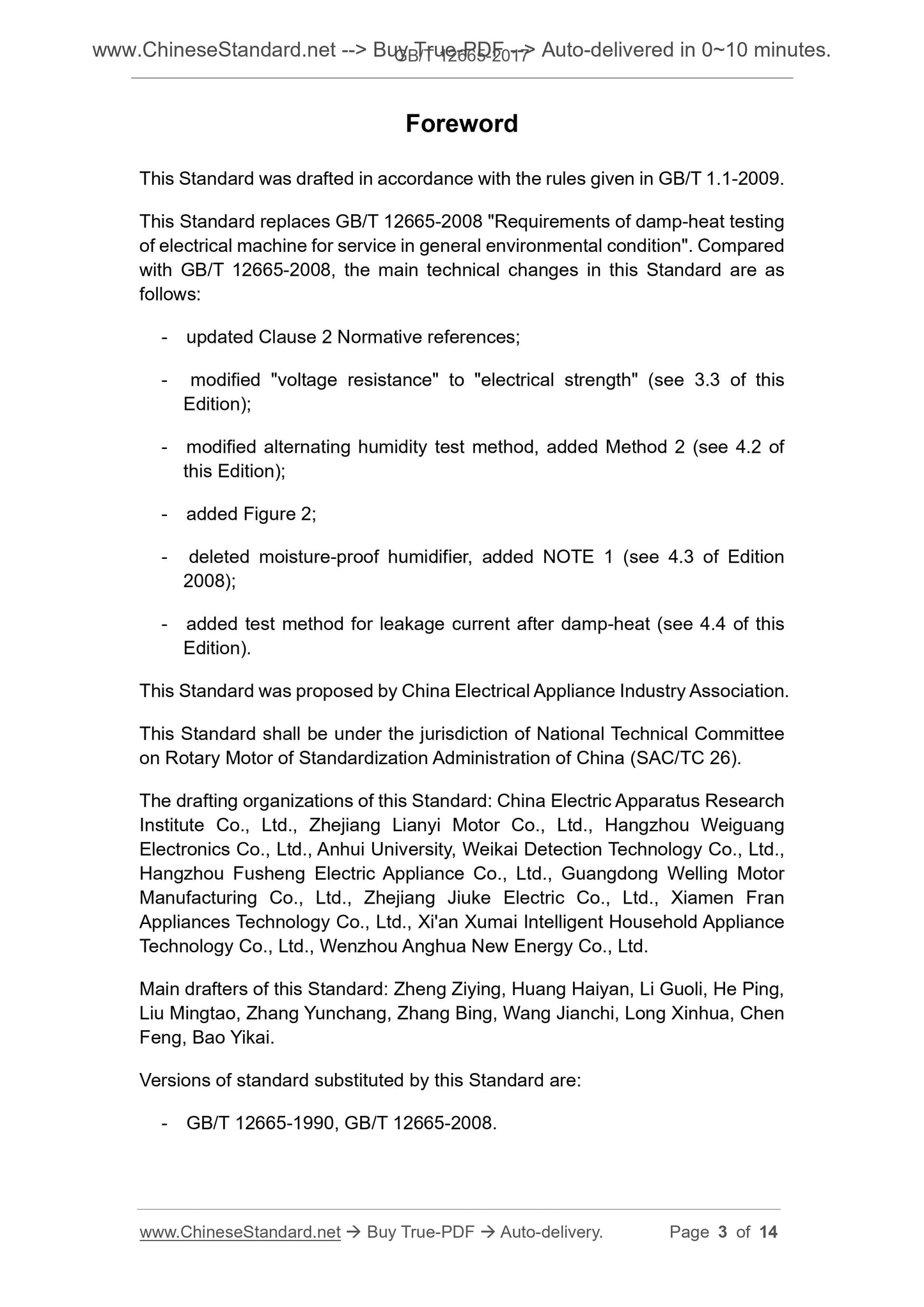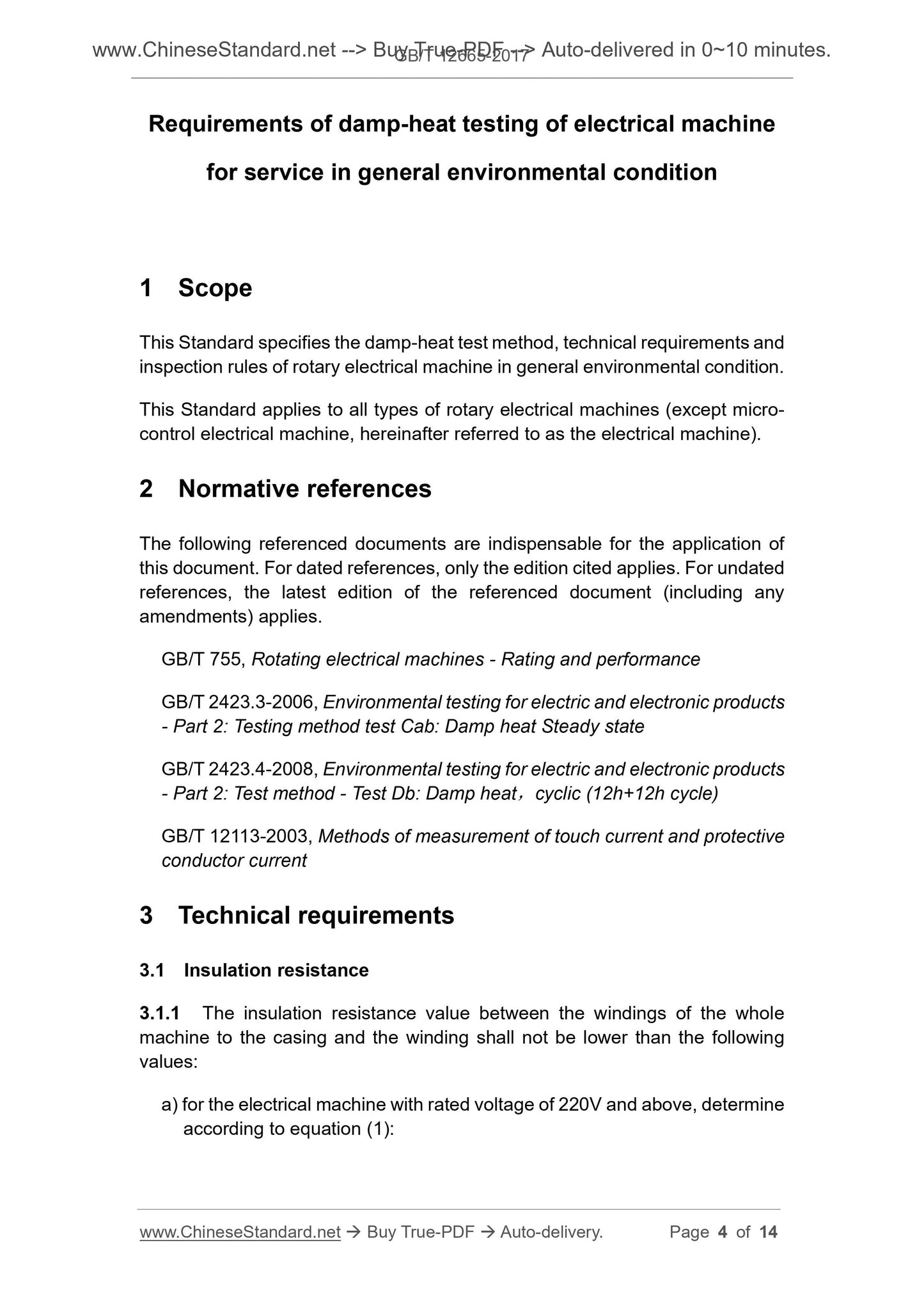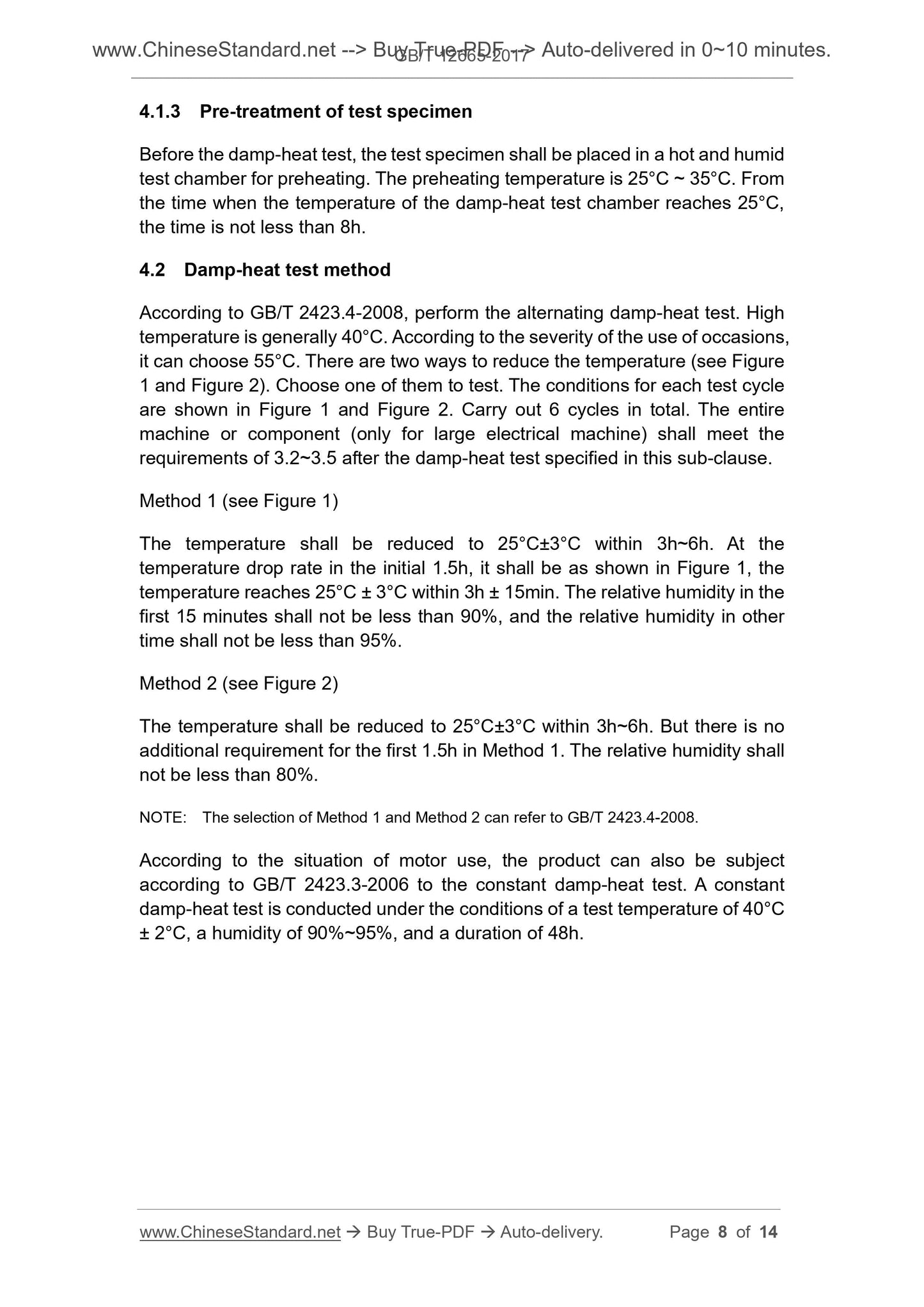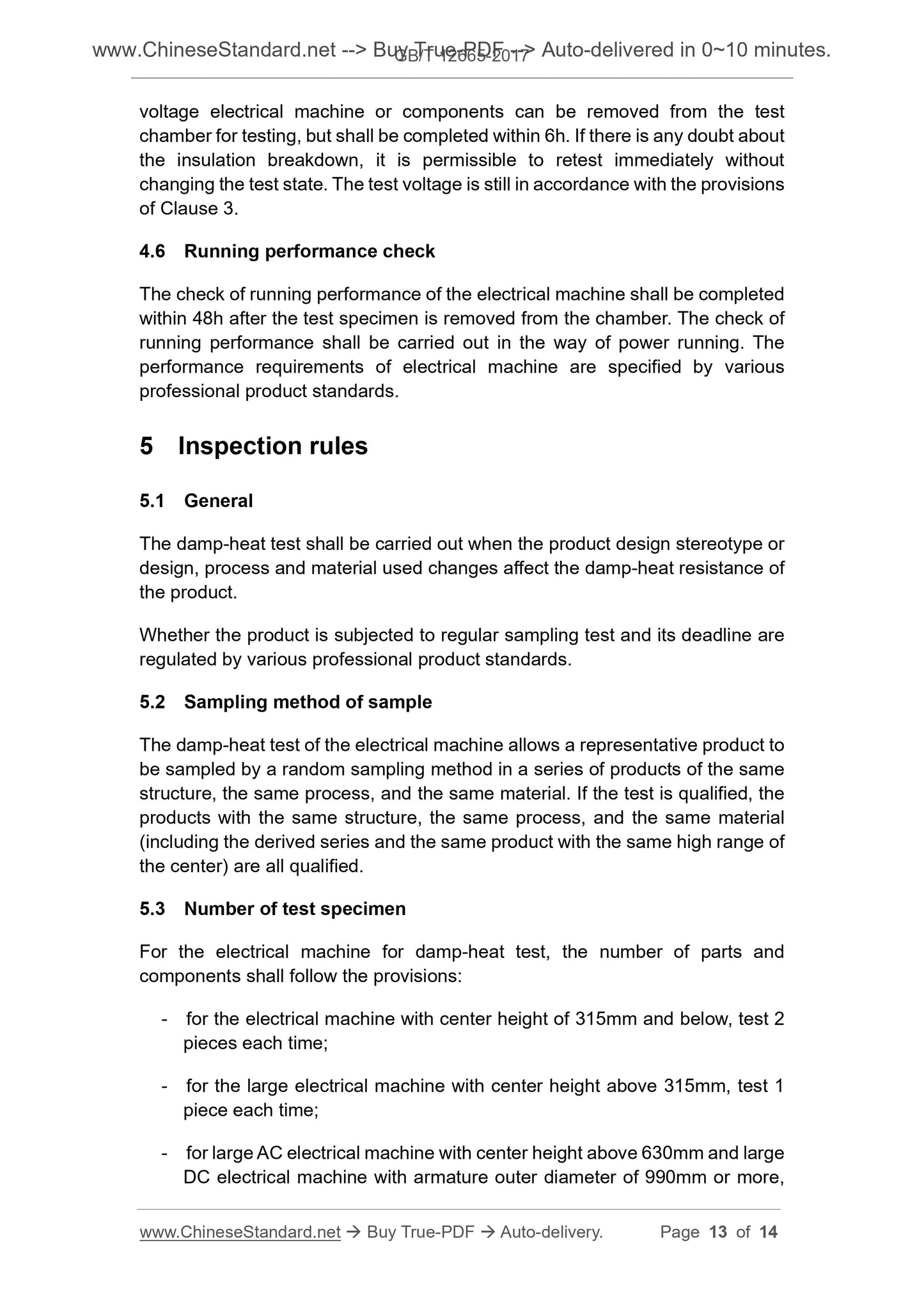1
/
of
6
www.ChineseStandard.us -- Field Test Asia Pte. Ltd.
GB/T 12665-2017 English PDF (GB/T12665-2017)
GB/T 12665-2017 English PDF (GB/T12665-2017)
Regular price
$145.00
Regular price
Sale price
$145.00
Unit price
/
per
Shipping calculated at checkout.
Couldn't load pickup availability
GB/T 12665-2017: Requirements of damp-heat testing of electrical machine for service in general environmental condition
Delivery: 9 seconds. Download (and Email) true-PDF + Invoice.Get Quotation: Click GB/T 12665-2017 (Self-service in 1-minute)
Newer / historical versions: GB/T 12665-2017
Preview True-PDF
Scope
This Standard specifies the damp-heat test method, technical requirements andinspection rules of rotary electrical machine in general environmental condition.
This Standard applies to all types of rotary electrical machines (except micro-
control electrical machine, hereinafter referred to as the electrical machine).
Basic Data
| Standard ID | GB/T 12665-2017 (GB/T12665-2017) |
| Description (Translated English) | Requirements of damp-heat testing of electrical machine for service in general environmental condition |
| Sector / Industry | National Standard (Recommended) |
| Classification of Chinese Standard | K26 |
| Classification of International Standard | 19.040 |
| Word Count Estimation | 11,133 |
| Date of Issue | 2017-11-01 |
| Date of Implementation | 2018-05-01 |
| Older Standard (superseded by this standard) | GB/T 12665-2008 |
| Regulation (derived from) | National Standard Announcement 2017 No. 29 |
| Issuing agency(ies) | General Administration of Quality Supervision, Inspection and Quarantine of the People's Republic of China, Standardization Administration of the People's Republic of China |
Share
